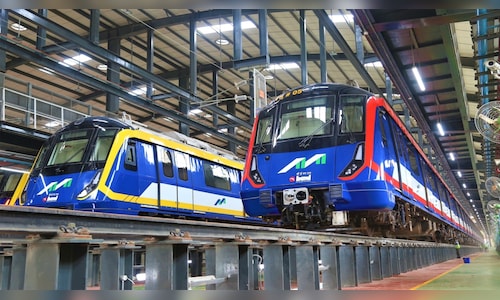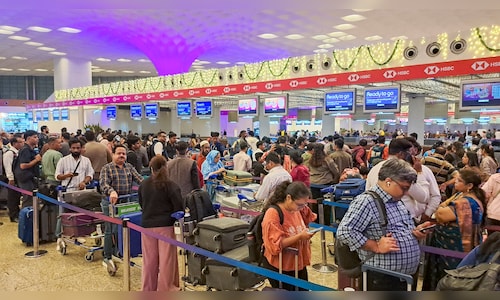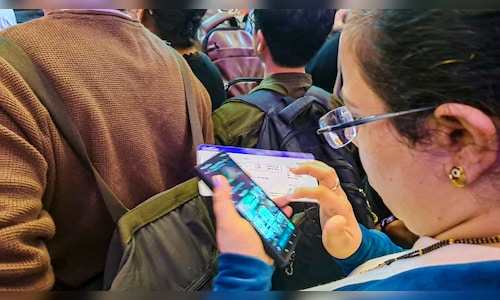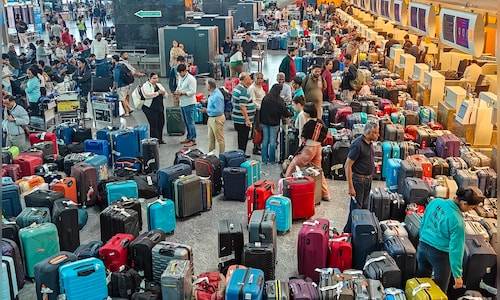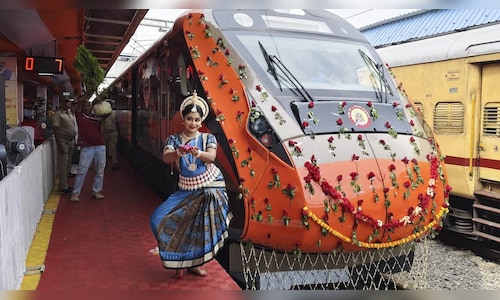Currently, 68km of metro across four lines is operational. An additional 134km is under construction across nine lines, and over 100km of lines are in the planning or tender stages.
By 2030, Mumbai’s Metro
network is projected to significantly expand to 300-340 km of operational lines, transforming the city’s transport landscape.
Operational Lines:
Line 1 (Blue): Versova-Andheri-Ghatkopar (11.4 km, ₹2,356 crore)
Line 2A (Yellow): Dahisar East to DN Nagar (18.6 km, ₹6,410 crore)
Line 7 (Red): Dahisar East to Gundavali (16.5 km, ₹ 6,208 crore)
Line 3 (Aqua): Colaba-BKC-SEEPZ (partially operational, 22 km underground, rest still under construction, ₹ 33,406 crore)
Metro lines under construction or planned:
The lines under construction include 2B, 3 (remaining portion), 4, 4A, 5, 6, 7A, 9, and 12 (some segments), totalling approximately 134 km.
Line 2B (Yellow): Andheri-Mandale (23.6 km, ₹10,986 crore, phased opening expected in 2025-2026)
Line 3 (Aqua): The remaining underground part (11.5 km) will be completed in 2025.
Line 4 & 4A (Green): Wadala to Gaimukh (₹ 3,907 crore), anticipated to open by the end of 2025 or early 2026.
Line 5 (Orange): Thane-Bhiwandi-Kalyan (12-13 km, ₹ 8,416 crore).
Line 6 (Pink): Swami Samarth Nagar to Vikhroli (15 km, ₹6,672 crore, 78 % complete, projected by late 2026)
Line 7A (Red): Extension from Gundavali to Airport (3.2 km) by late 2025.
Line 9 (Red): Extension from Dahisar to Mira-Bhayandar (11 km, ₹ 4,400 crore, projected by December 2026)
Line 12 (Orange): A 23-kilometre stretch from Kalyan to Taloja that is currently under development and costs ₹ 4,132 crore.
Approved/Proposed:
In the proposal or DPR stage, there are now 115–140 km of lines in the planning/tendering stage, including lines 8, 10, 11, 12, (remaining), 13, and 14.
Line 8 (Gold) connects CSMIA Terminal 2 (Andheri) to the upcoming Navi Mumbai International Airport (NMIA) and costs ₹ 15,000 crore. This line will extend the present Navi Mumbai Metro from Belapur to Pendhar.
Line 10 (extension of green line) connects Thane/Gaimukh region to Mira Road/Shivaji Chowk, crossing Lines 4 and 7, costing ₹ 4,476 crore.
Line 11 (Aqua): Wadala to South Mumbai/CSMT and Gateway of India; cost: ₹ 8,736 crore.
Line 12 (Orange): Extension of Line 5 (Thane-Bhiwandi-Kalyan) to Taloja / Navi Mumbai, costing ₹ 5,865 crore.
Line 13 (Red) is an extension of Line 9 (Dahisar East-Mira Bhayandar) towards Virar, costing ₹ 6,900 crore.
Line 14 (Pink): Proposed link from Vikhroli/Kanjurmarg in Eastern Mumbai to Ambernath (Thane district); cost ₹13,500 crore.
Key Features:
Interchange Stations: Many Metro lines intersect, allowing passengers to transfer between lines.
Frequency: Trains run every 4-10 minutes, depending on the line and time of day.
Fare System: Distance-based slab system, with fares ranging from ₹ 10 to ₹ 80.
Ticketing: Available through ticket counters, vending machines, mobile apps, and online platforms, among others.
Parking at Metro stations:
Many major Metro stations provide parking for two-wheelers and cars to promote park-and-ride commuters.
Has Metro transformed Mumbai?
Reduced travel time: Travel time has been significantly reduced thanks to metro lines that connect different parts of the city.
Improved connectivity: Metro lines connect previously isolated areas, allowing for easy access to commercial and residential districts.
Reduced traffic congestion: By providing a faster and more reliable alternative to driving, the metro has helped to ease traffic congestion on roadways, particularly during peak hours.
Economic growth: Improved connectivity and accessibility have boosted economic activity along metro lines, promoting the growth of commercial hubs and residential buildings.
Expansion: Ongoing and planned Metro lines, such as the Airport Express corridor (Line 8) and others linking various sections of the Mumbai Metropolitan Region (MMR), improve connectivity and promise even greater transformation in the future.
Mumbai Metro colour:
Blue: Line 1 (the first and only fully operating line until 2022).
Yellow: Line 2A + 2B (East-West link via Western suburbs and BKC).
Gold: Line 8 (Airport express corridor).
Orange: Lines 5, 12 (Central Mumbai to Kalyan-Taloja belt).
Pink: Line 6 (East-West connector); Line 14 likely same.
Green: Lines 4, 4A, 10 (Eastern suburbs to Thane).
Aqua / Navy Blue: Line 3 + Line 11 (Underground CBD link).
Red: Lines 7, 7A, 9, 13 (Western corridor northward).


